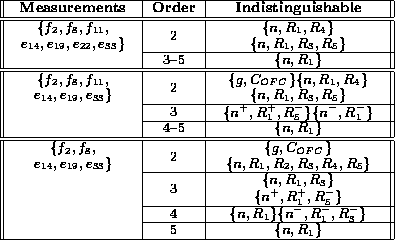For practical reasons,
the observations selected to achieve
complete diagnosability of single faults by theoretical analysis may not
be the best measurements to use.
This may be because some of the chosen
sensors are expensive or unreliable, or some measurement points may be
hard to access. As
an alternative, measurements that are not part
of the ideal set of observations may be available,
for example, regulations may require certain
pressures and flows to be monitored.
In case of the secondary cooling system,
variables in the system that are typically hard to measure are
flow variables because flow sensors for liquid sodium are imprecise and
expensive.
Using only the observations that are currently available,
![]() , depicted by
boxed variables in Fig. 7 and Fig. 8, single
faults in the system are equally well diagnosable
with the subset
, depicted by
boxed variables in Fig. 7 and Fig. 8, single
faults in the system are equally well diagnosable
with the subset ![]() (see Table 3). The exception is
(see Table 3). The exception is ![]() .
The number of
observations in this set and the ideal set
of selected measurements are the same, but higher order predictions
are required to achieve the same diagnosis for the currently used
set. This implies there are more likely interactions in multiple,
cascading, fault scenarios for the current observations, which
reduces the chance to making a complete or unique diagnosis.
.
The number of
observations in this set and the ideal set
of selected measurements are the same, but higher order predictions
are required to achieve the same diagnosis for the currently used
set. This implies there are more likely interactions in multiple,
cascading, fault scenarios for the current observations, which
reduces the chance to making a complete or unique diagnosis.

Table 3: Fault discrimination based on actual measurement points.